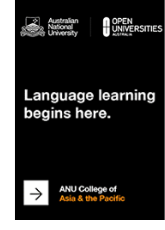Young middle Australians are showing that traditional approaches to arts and culture should be replaced with integrated policy settings that more closely reflect their values, Kate Fielding writes.
Between April and June 2021, researchers spoke with young people aged 18 to 29 in communities across outer suburban and regional Australia. They asked about the value placed on arts and culture and the role of governments in ensuring access to arts and cultural experiences for all Australians, no matter where they live.
These young people identified as undecided voters, and were predominately living in marginal federal electorates. They didn’t work in arts and culture, and hadn’t grown up in households where their family worked in arts and culture. They included retail and hospitality workers, students, and health and administrative workers. Some of them were parents themselves, raising young children.
During focus groups held over three months, their experiences, ideas and hopes for the future were analysed to establish the key themes that were representative of the group. The result was Next Generation of Voters: Young middle Australians talk Arts, Culture and Creativity, a report which found that arts and culture are both embedded in and inseparable from the lives of these middle Australians.
The young people interviewed reported using arts and culture as tools to understand themselves and their changing world, to connect with their community online and in real life, and to improve their health and wellbeing.
They spoke of arts and culture as objects and activities that have substance, allow for self-expression, tell a story, and can be engaged with in the company of others. This broad definition meant that everything from an opera to a street performance, a novel or a TikTok video could be included.
Importantly, young middle Australians reported that they don’t associate arts and culture with elitism and are comfortable engaging with ‘high arts’, expecting to have opportunities to access these in the same way they do to other artforms. They also spoke of the positive role of digital technology in increasing access to arts and cultural experiences, but still placed equal value on digital and physical experiences, with those that allow for both being the most engaging.
The young people interviewed also felt arts and culture had an important role in Australia’s future, believing that it can deepen Australians’ understanding of different people and perspectives while helping to tell Australia’s diverse range of stories to the world. There was a belief that arts and culture will shape our communities of the future on a local, national, and international level.
Young middle Australians are very engaged and influential arts and culture creators, participators, and consumers, and this suggests a change is needed across public policy settings to ensure they reflect the priorities and values of contemporary Australia.
These views held by young middle Australians show that past approaches to public policy will not meet their needs.
To better reflect their experience, leaders need to connect arts and cultural policy to other policy settings, reflecting the integration between arts and culture and everyday life that is happening in the Australian community.
This connection would recognise that arts and culture play a critical role in cultivating innovation, improving wellbeing, developing children, engaging with sports, recovering from trauma, growing the economy, building communities, and shaping Australia’s future.
In doing this, they would also have to engender a relationship between practice, policy, and investment that draws connections between the virtual and the real, the institutions and the grassroots, and the local and the international.
T he report reveals the need to deliver more integrated, enhanced public policy settings, such as through a National Arts, Culture and Creativity Plan. This would require all levels of government to work together with industry and business.
he report reveals the need to deliver more integrated, enhanced public policy settings, such as through a National Arts, Culture and Creativity Plan. This would require all levels of government to work together with industry and business.
It also reveals how crucial such a change would be to the next generation. It is a unique opportunity to look to the future, consider what is needed and sought by Australia’s young creators, participators, and consumers, and design a 21st century framework that delivers social, economic, and cultural benefits for all Australians.





 Podcast: Unmuting the muses
Podcast: Unmuting the muses
 COVID-19 and hitting the wrong notes for the arts
COVID-19 and hitting the wrong notes for the arts